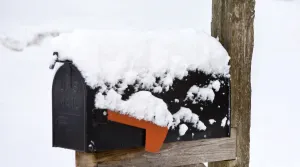Nuisance law plays a critical role in resolving conflicts between neighbors. It encompasses various situations, including noise disturbances, encroachments, and other activities that may interfere with the use and enjoyment of a person’s property. One common area of dispute involves joint fences between two properties. This article examines a hypothetical situation involving two neighbors and a disagreement over a shared fence.
Hypothetical Situation
Consider two neighboring homeowners, Neighbor A and Neighbor B, who share a common fence that divides their properties. Over time, the fence becomes damaged and requires repairs. Neighbor A wishes to fix the fence and requests Neighbor B to share the costs. Neighbor B, however, refuses to pay for the repairs, claiming that the fence is not his responsibility.
Legal Analysis
In many jurisdictions, joint fences are considered shared responsibilities, and both parties may be legally obligated to contribute to maintenance and repairs. The refusal to pay for the necessary fixes could be considered a nuisance, particularly if the damaged fence affects Neighbor A’s use and enjoyment of his property.
The legal framework may vary depending on the jurisdiction and the specific facts of the situation. Generally, the following legal principles may apply:
1. Local Ordinances and Agreements: Many localities have ordinances governing fence maintenance, and some might specifically require neighbors to share the costs of repairs. Additionally, previous agreements between neighbors or property deeds may impose obligations regarding the fence.
2. Private Nuisance: If the damaged fence substantially interferes with Neighbor A’s use and enjoyment of his property, it might be considered a private nuisance. In such a case, Neighbor A may have legal recourse to compel Neighbor B to contribute to the repairs or to seek damages.
3. Alternative Dispute Resolution: In many situations, neighbors can resolve their disputes through mediation or arbitration, which are often quicker and less expensive than litigation.
Conclusion
The hypothetical situation illustrates the complex legal issues that can arise in neighbor disputes over joint fences. Legal obligations may vary based on jurisdiction, local ordinances, and specific agreements between the parties.
Property owners facing similar issues should consult with an experienced real estate attorney to understand their rights and responsibilities under the applicable law. An attorney can help explore legal options, including negotiation, mediation, or litigation, to ensure that the dispute is resolved in a fair and lawful manner.






